
|
| Accept Cookies | Customize | Refuse Cookies |
Mediamenta www.juzaphoto.com/p/Mediamenta  |
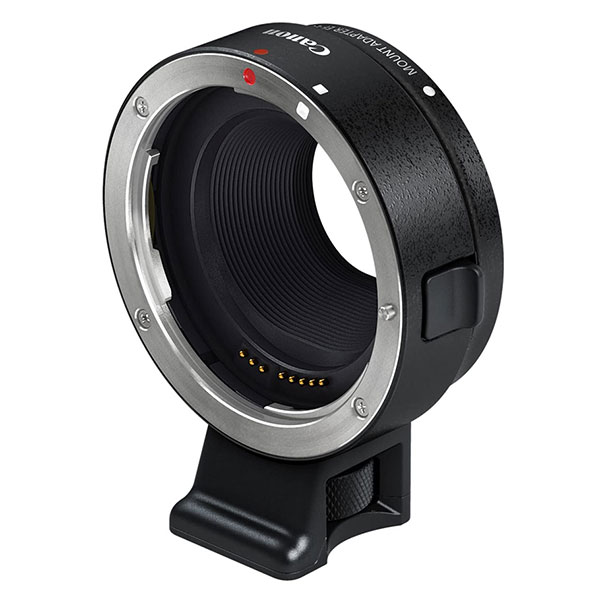 | Canon Adattatore Canon EF/EOS M Pros: It's the original and it shows Cons: Maybe it's the cost, and the lack of evolution Opinion: I have both this and the Viltrox, which I inadvertently inherited from a sale. By now the Eos M are out of the market and those who get rid of them tend to get rid of the entire kit. The operation is perfect, the aesthetics harmonize the EF lenses and the M body. By comparison, the removable foot is very similar to the Viltrox one, but while the Viltrox one can be mounted on the Canon, the Canon is not fully interlocking with the Viltrox ring. On the Canon there are recesses with rubber inserts that are missing in the recesses, very similar, Viltrox (but maybe in the used in my possession they have jumped off, and therefore it must be tightened all the way). The gold contacts are very plentiful, compared to the Viltrox ones. At the rear they are quadrangular, therefore with more margin, and at the front they are larger, therefore more robust. The gold plating is therefore more abundant and it is to be assumed at this point that it is also thicker, therefore more durable to wear abrasion. The visible screws are also thicker. All of this can contribute to the weight difference of about 5 grams: the Canon weighs ~154 grams (~47+~106) compared to ~149 (~46+~103) for the Viltrox. Viltrox, however, has developed the Speed Boosters starting from its adapter ring and, being the M among the smallest mirrorless cameras around with an APS-C sensor, any consideration must keep this element in mind. sent on April 07, 2024 |
 | Jupiter 21M - 200mm f/4 Pros: Rock solid fixed, very affordable price Cons: Lampshade, weight, not very bright despite the texture and appearance Opinion: Bought for a few euros, m42 and of course FF, practically universal, it is a little less sharp than the EF 200 f2.8 II L Canon and also the EF 70-200 f2.8 II L a TA, but perhaps with a review in assistance (30 neuri) could improve. Heavy, of obvious military approach. It seems to be made especially for those in Russia who are always wearing gloves and therefore care if it is cold to the touch. It has three rings but evidently the only one that counted was that of the focal length, extended moooooolto, while instead the focal opening resolves to a few degrees of angular variation, noisy, not at all comfortable: they seem to say "do not touch me on mission". This setting, this Siberian education, as a soldier with gloves, is visible precisely in the construction of the focal length ring: a grip never ambiguous, very fluid, very precise, of quality without uncertainty. Having said that it is a lens that can still say its in full light, it has little distortion as you can expect from this focal length. The lampshed is ridiculously small, but made especially so as not to be lost. Ultimately, having it or not having it does not change the life of those who make a talk of money immobilized in a drawer, and in the meantime it is there, waiting for its moment, like a faithful and not at all annoying dog, a little rustic. sent on February 01, 2021 |
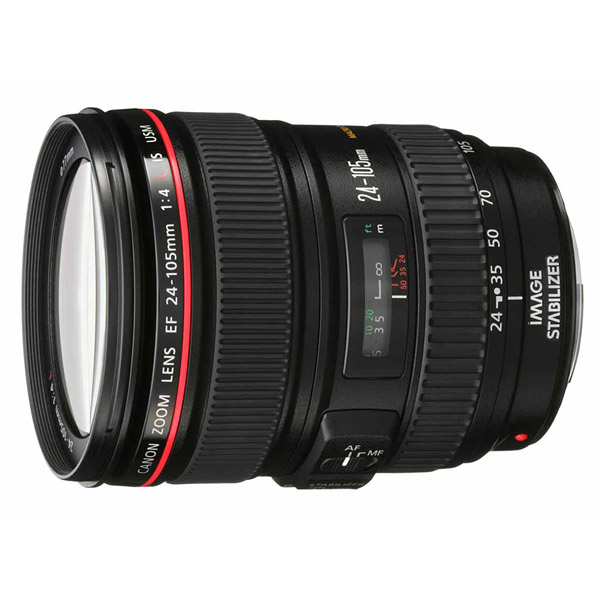 | Canon EF 24-105mm f/4 L IS USM Pros: versatility, stabilization Cons: slightly dark and yet a little short Opinion: Used for almost ten years, in sporting or public events in the broadest sense. I wasn't thrilled about it, but after taking it to the canon camera service in Rome almost six years ago I had to believe it again. Evidently he had problems with engraving, front or back focus, misalignments. In short, there I learned that if I do not see a photo well I have to spend those few tens of euros on the lens and give it a second chance. Given the spread in the used of this lens, it is an obligatory step. So it is rather engraved, in TA, but also giving a certain aura, for example to photos of monuments (https://www.juzaphoto.com/galleria.php?l=it&t=3411135). Stabilization in the norm, at 105 does not offer much bokeh, due to the limited opening. The objective extends to the variation of the focal length giving reasoned concern for the dust that you risk embarking. In the photos to cyclists in road or offroad race I used it for a long time in the first step, the one where they are still grouped, discovering in recent times the greater versatility of the 28-135 that gives the possibility of a greater number of subjects caught, despite having a lower stabilization and sometimes being darker (we talk about outdoor CMQ). Overall it is a work goal, it does not make much sense to carry it around for passion, better one or two fixed or the 24-70 even not stabilized. Rings tend to gray with the passage of time. sent on January 26, 2021 |
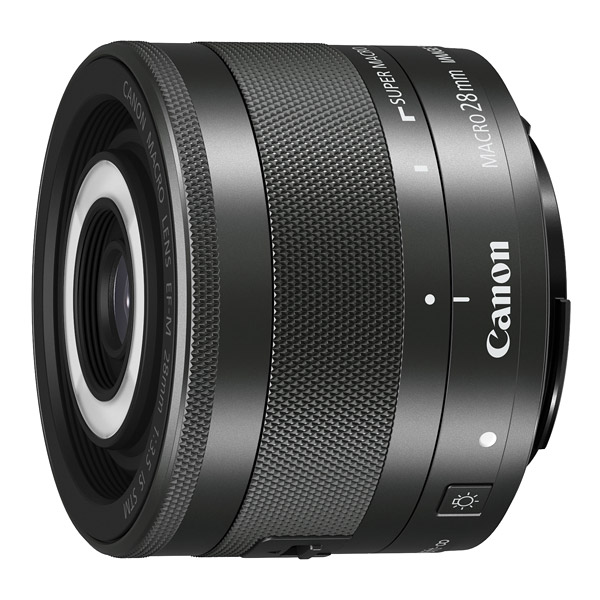 | Canon EF-M 28mm f/3.5 Macro IS STM Pros: Small and light, built-in lighting, price Cons: Poor opening Opinion: Taken on a "global" ecommerce site for less than two hundred euros. Within three weeks of ordering, the box arrives very damaged, and held together in the bottom by a sin with Chinese characters. It is not sealed, it lacks the instruction leaflet (not bad, but it has evidently been opened) and that of the guarantee. However, the lens is perfect, with the two caps and a metal "proteggiled" (Canon ES-22) that also does in a certain sense as a lampshed, naturally removable to the need. That is an essential objective. Macro, with integrated lighting, two-intensity plus deactivation, through repeated pressures of the special key card, which in my opinion sins in not being backlit, and always for the happiness of the short-lived batteries of the M. Addirittu system the unlocking handcuff (which non-dramaticly extends the lens) gives the possibility to access the additional supermacro mode, and this confirms the official data of the nine centimeters of minimum focus distance from the sensor, occupied in large part by the lens. It is clear that you take it for that, having on the one hand the 22 f2 and on the other, for example, the 40 pancakes (with adapter): the lighting is decisive, especially with non-smooth surfaces such that they would literally reflect its shape. In my opinion, a third ring is missing for the fine adjustment of the lighting, but it does not matter: space should have been identified, and the choice of lightness and portability excluded it by creating a slightly dark fix. The maximum aperture of f3.5 is certainly not a first, and the bokeh is what it is. In difficult situations, however, stabilization helps, another of the advantages of this small sample, but in supermacro mode (as already highlighted by those who precede me) going out of focus is really a moment. In my opinion, it is the lens that makes the M system definitive on the others (mirrorless aps-c and m4/3) as well as establishing its economic convenience. Photographing macros has never been easier: small objects are approachable at will, LED lighting lowers ISO's hunger and this in resolute sensors gives more possibilities for crop. On the Eos M3 the integrated flash is very strong CMQ (even at minus two stops of discharge intensity) compared to the lighting of the right LED, which little compensates (to activate only one of the two side LEDs must be pressed for a long time and then several times the appropriate key, up to the active side and the desired intensity). EDIT: the proteggiled ES-22 Is the lampshed! :P sent on January 25, 2021 |
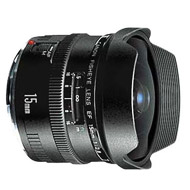 | Canon EF 15mm f/2.8 Fisheye Pros: Sharpness, lightness, portability, non-plastic Cons: Scratch-prone lens (like all wide thrusts), cap, paint quality Opinion: Taken visibly used in the store, without a box, at 300 euros (so with one-year warranty cover). I've been trying it for less than 24 hours but I've already realized that it's one of the best goals that exists. Blade already at 2.8, AF very fast, in manual the dial is hooked to the sealing, which is apparently inaccurate, but this could prove to be a problem right in macros, where however it tends to illuminate and close. So there's everything you need. I deny that the angle of the field is flat: it is slightly less than 180 degrees, maybe 170/175. Light purple fringing in the specimen tested in the presence of strong TA reflexes, which could be accentuated on very resolute files, and which are partially deleteable in PP. Better image quality than sigma 10 2.8 for aps-c, but perhaps its real competitor could be the 8mm samyang, which beats easily. In fact I think it is difficult to find a better lens on the wide-angle pushed: the sigma 10-20mm f/4.5-5.6 first series is not even up to the fixed of the same house, and beats it with the Samyang. The tamron 15-30 first set actually stands behind him, but he doesn't have such a wide angle of field, it's not fisheye, so necessarily distorts the sides. The 17-40 canon is quite emotional at 17 because of those blue skies, but it's F4... Sorry not to usm: it always seems to be discarding some glass with metal. Likely alternative to tilt & shift for architecture and interior photos, as long as you use 5ds/dsr, straighten the distortion and resize to conceal the loss of quality at the sides. sent on August 07, 2020 |
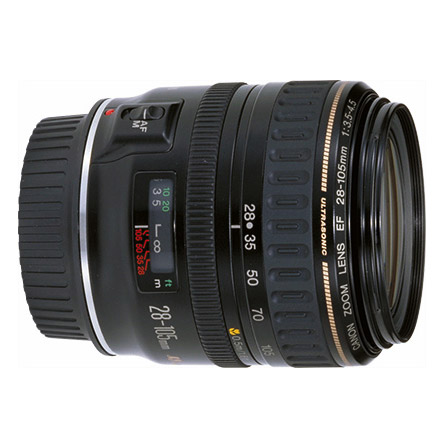 | Canon EF 28-105mm f/3.5-4.5 USM Pros: Extreme lightness, sharpness on FF, important opening Cons: lack of stabilization (I think not to overlap with 28-135) Opinion: Small, light, bright, inexpensive in used, tourist all-rounder to pair with the wonderful sensor of the 6D mk1. The first lens I bought, designed for the film, before I even got the 30D, and then we talk about pretty much three lustres ago. Knowing the purpose, certainly not pro, never disappointed me. Suitable for outdoor photos to monuments, architectures (to be straightened obviously with Cameraraw, but at the cost of a loss of sharpness) and walks maybe in the woods, as per gallery (Campaign, in my profile), looking for details that need good behavior at high iso rather than many megapixels. Less recommended on APS-C, where it becomes a strange telezoom from an almost normal minimum to a maximum just over 160mm. Paired with macro rings, such as Kenko, it has an honest AF for the years it boasts. A fairly common goal, it costs less to buy it back than to look for any third-party assistance to regenerate it. Does he number in a lens collection? No, because sooner or later everyone who owns it wants to go out and use it. The Nikon 28-85 is more voluminous and short, with the same min max opening, but it is also a good alternative. Will it be the concept? sent on July 27, 2020 |
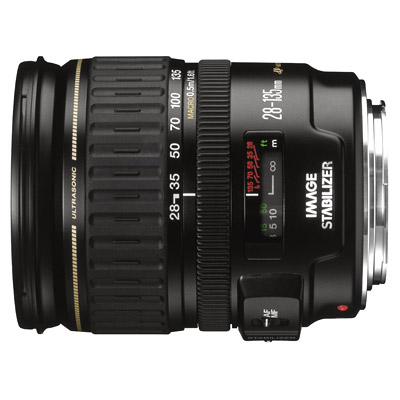 | Canon EF 28-135mm f/3.5-5.6 IS USM Pros: Extension Cons: Limited stabilizer, optical defects Opinion: Bought a dozen years ago. It's basically a 4x zoom, including pretty much all the focal lengths you need. A unique lens for unpretentious photos, or even full hd static videos, to be used especially on NOT particularly resolute FFs, such as the 6D, which compensates with the most high ISO tightness the low brightness of the lens. For me, however, the advantage is another: it is the best lens when, in cycling competitions, at the first step of the shots there is the swarm of athletes. Then it becomes more valuable than 24-105, because depending on the moments you are able to even take double photos, when then comes some isolated athlete, without pulling out a zoom canvas. In these situations you shoot in medium or small jpeg, so all defects found become secondary. In other words, it is not held for amateur pleasure, but for necessity in some areas of work. It does not have a remarkable establishment, because it is not evolved. sent on November 13, 2019 |
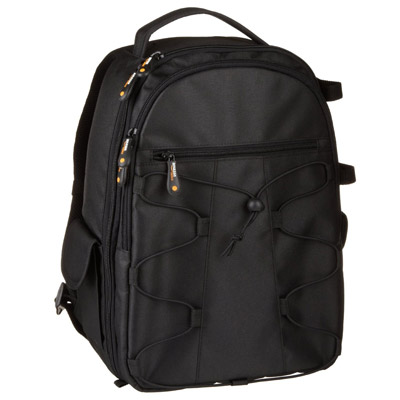 | AmazonBasics - Zaino per fotocamera e accessori Pros: Cost, lightness, extra compartments and straps, low price Cons: Not suitable for heavy bodies Opinion: Very practical for telecamerine, mirrorless, pancakes and small tripods. It has many practical compartments and is a real backpack for walking, street, urban environment, for situations not too rugged. It is built by a company outside Amazon and rebranded: the original, identical, is branded by that same company and costs maybe fifteen euros more. It is better to have several and already full for the different situations. I would avoid situations such as weddings, beach, mountain walks maybe in rainy areas (e.g. Tiber springs) because it does not have waterproofing, especially on zips, it does not offer passive resistance to major shocks. Save your back with its lightness, which should not be tested with reflexands and pro lenses, heavier. The two front pockets can accommodate a tablet and a small notebook. The price is unbeatable. sent on November 06, 2019 |
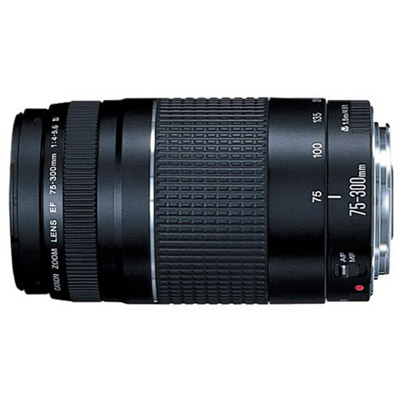 | Canon EF 75-300mm f/4-5.6 III Pros: Lightweight, especially cost-effective Cons: Lack of stabilization, poor image quality, is not USM. Opinion: It is a lens to keep only if you make videos. In Full HD it's OK, at 300, if it's on hard drive. For the rest it is full of problems. Very light, the ideal match is with an Eos M in video mode on a tripod even lighter due to reduced load, but cmq stable at longer focal lengths. It also makes sense for "small pictures" "Like those for websites. It's plasticous and it's not a battle. It makes no sense to use it on vacation: you would ruin memories. sent on August 22, 2017 |
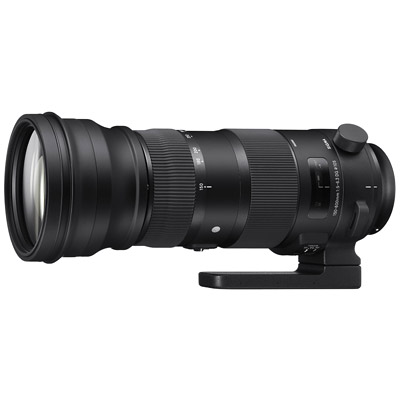 | Sigma 150-600mm f/5-6.3 DG OS HSM S Pros: Almost total absence of chromatic aberrations, sharpness on FF, commercially rich offer (dedicated bag, belt, customizations but with the optional Dock), replaceable foot with third-party accessory compatible with the attack Arca Swiss (but Manfrotto what does?). Cons: Heavy, bulky at 600mm, huge, 105mm filter (in front of this given one expects well other performance, for example a fixed F5), worsens significantly with CT on aps, lampshade that tends to scratch (watch not to lose the three parts of the lad, especially the waist). Opinion: The Sigma 150-600 S is fine on FF and not multiplied. It clearly has a different physics from the 300 f4 L canon that it replaced, which at 960 mm (1.4x II on APS-C) had a thousand flaws (purple fringing, not IS, lens of 1991...) but it was light and did not resonate microvibrations. If you have to make movies the Sigmone becomes a wonderful 1920mm multiplied 2x III (canon) on Eos M (for example), or a 1800mm on A6000 (sony). At 1080p it is resolute and defined, but the micromox being recovered (manfrotto head 502 out of 546) is clearly perceptible, even if you activate the OS on tripod (which cmq serves, at 1920mm... eye to noise). It's so heavy that they had to put the block on the zoom (it doesn't have to be forced using it as a pump, ocio). Who can take a plate that exceeds the foot, if it has to maneuver it freehand, or rather replace the same foot of the ring with dedicated third-party accessory. It's a gym lens being lifted. As for carrying it around, I'd just let it go. Better the new 100-400 Canon or the 200-500 Nikon. Box seemingly gaunt, but inside is both the duffel bag and the strap. Needs the Sigma Dock (40th). It should be transported in the back seat and not in the trunk. The live view of the Eos M manages to maneuver the AF with the 2x III Canon multiplier inserted. The 1.4x III makes it incompatible on 5d3. 105mm filter that may not even be purchased on the first, except it is a PL really necessary in some cases. Currently (10-2017) I am looking with a colleague for a gimbal head that absorbs microvibrations or does not transmit them... Edit: Brought into assistance, the issue of microvibrations has almost been resolved. Shooting with a 6D, however, it is still evident that there is still an incovery of sharpness as the shots change. Sometimes it seems that the optics still breathe, especially in the configuration I was talking about (1920mm). Other times the sharpness seems to come and go in a single photo, perhaps due to the increase of ISO, as in waves. Other times, part of the image is out of focus. Probably all this is due to the heaviness of the lenses that tend to dance, I imagine, that is to have game and therefore not to stand still while shooting. You can shoot with the freehand lens, but you have to get a long plate and secure it at the base of the ring, base that is better to replace with an ergonomic for the hand. The best thing then, perfection from this point of view, is achieved by threading the large linch of the lampshade for a screw of 1/4 or 3/8 so that the "tube" does not flex and is supported externally precisely with the 35 cm plate. At that point, it becomes fantastic and fun to shoot with the 4 kg of equipment, as if it were a rifle, because you hardly get tired anymore. sent on July 22, 2017 |
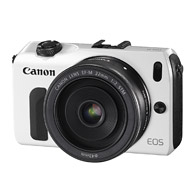 | Canon EOS M Pros: Portability, sensor, accessories Cons: Sometimes it's too small Opinion: I took two of them. I use mostly to make fast full HD hotspots from different points of view. It is a walking car (I think it's also 6d), a trip, a street, a museum, etc. - a kind of soap which, however, can still surprise you today. RnrnThe raw is slightly noisy than the 7D, though The same sensor. The burst does not shout at the miracle, as does the AF (however improved with the firmware upgrade). RnrnThe touch screen is not big but it was the maximum allowed by the body, the range of accessories (removable flash equivalent to the aps-c canon reflex; ef and ef-s lens adapter that rediscovers ancient lenses, such as 50 1 , 8 or 28-103 3.5 4.5, which can focus on hands even if the AF engine breaks, unlike the EF-M) .nn I always have one, maybe with 22 pancakes, because even If we have the cell phone there are actually so many occasions every day to snap around and a car so small with such a big sensor not c%26 # 39; is around. It should be emphasized that its lightness, an absolute value, makes it possible to take advantage of the cheapest and ridiculous tripods (or in the attic), or raise it with arms or monopods even at three meters Without any special effort.rnrnP.S .: there are also EF-M M42 adapters and other attachments ... sent on June 24, 2017 |
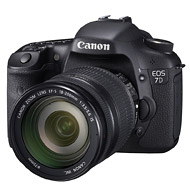 | Canon 7D Pros: Rugged Body, Built-in Flash (Guide Equivalent to Flash Equipped with Eos M), Live View, Video, F8 Focus (Live View Only) Cons: Noise Opinion: I have this beauty for at least 5 years. I used it mainly in sports photography, when it needed the burst and the result, in conjunction with the 5dmk3. It is especially recommended on distance. Its features are amazing: one on all, the AF variation depending on the shooting mode, the landscape, or the two portraits (three in total). Its problem is a 18-second non-optimized sensor as in later versions. The secret to overcoming low noise noise lies in trying to take ISO 160, not 100 ISO. Obviously it does not make miracles, but does not even make the 7Dmk2. RnThe video side actually in closed places is not so different from a FF. Obviously it would be beneficial with a bright, fixed lens. Being second body instead tends to put on an economic goal. We learn to distinguish the obsolescence of the machine from certain choices that in particular contexts are wrong. It is in competition with the 6d, although they are different machines for some aspects (sensor, burst) because%26eacute; They have a similar list and portability. Its devaluation, begun in 2014 with the model replacing it, will have a sharp acceleration with the new 6d.rnAnche for this (the ridiculous price) is becoming an indispensable machine. sent on June 24, 2017 |
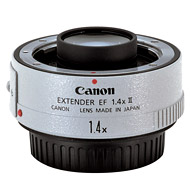 | Canon EF 1.4x II Pros: Light weight, low cost compared to the new generation. Cons: no. Opinion: Extender minimally invasive in terms of sharpness, fully compatible with the ultimate objectives (70-200mm f2, 8 L IS II) and very old (300mm L f4). Pocket full of seals they should do their work in the rain, when used alone obviously does not make you closer to your subject so impressionante.rnL 'firmware update several reflex (one in all the 5dmk3) that would give us the ability to focus when focus at f8 would combine it with another extender primarily targets not particularly bright and costly as the aforementioned 300mm f4 L. sent on March 11, 2013 |
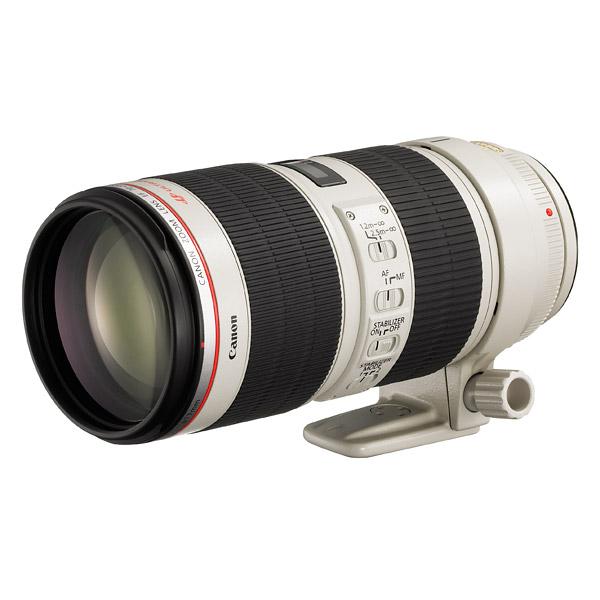 | Canon EF 70-200mm f/2.8 L IS II USM Pros: Stabilization, brightness, detail, extreme sharpness, etc. ... Cons: irreplaceable Opinion: I'm stepping stone to rece written by others. I use it for pleasure and profession (sports photography freehand) at room temperature for shots of non-trivial ff (5dmk3 + bg ... several kilos to handle) even recalls the vintage. 1.4 x multiplier is identical to itself for rendering image. I also have a fixed 200mm 2.8 but I have not done comparative tests, I think they are useless. For me the price is low, we are talking about a lens that looks good in a kit with fixed tele noblest of Canon.rnAggancio excellent, the bracket by hand is a good support for zooming and changing at the same time frame (full-length , American plan, first floor). Clearly, after two thousand photos taken in this way, you need to exercise compensatory. But it is the pena.rnSulla nature photography is obviously short, although a trip to Bioparco with this lens is a must for anyone who is Roman, and we expects the 200-400 ... which has a very different price. sent on March 11, 2013 |
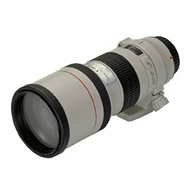 | Canon EF 300mm f/4 USM L Pros: Lightness, openness f4 Cons: Sharpness at room temperature Opinion: I bought this lens used but rebuilt three or four years ago, 600 euro. I used it mainly for birds, also multiplied. Goes a bit 'closed and therefore you can not use the f4 would give quite a few advantages under certain conditions. However, I refer to a pairing with aps-c (7d) and 100% display: Printing is still very good but I now very little mold ... rnChe say? To begin with, for a trip to places where it is feared the theft, for all those situations where we do not want to risk our equipment better but still expect shots importanti.rnL 'attachment object to focus not crazy. It 'sa bit slow, but we also speak of a lens to the mid-90s ... rnrnSu the internet rece say is sharper version stabilized. sent on March 11, 2013 |
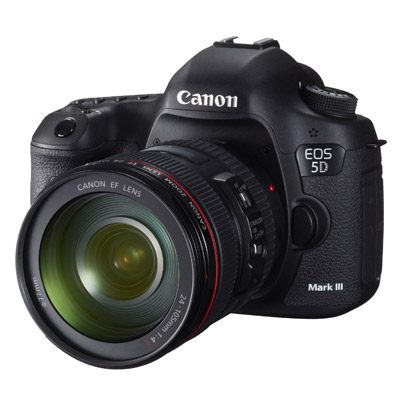 | Canon 5D Mark III Pros: Gust satisfactory for use not driven sensor and high ISO FF very clean AF ee iFCL pro body like the 7D Menu greatly improved Cons: Price Management RAW on camera good but partial lack of some features such as integrated: GPS (natural), control of the radio flash, wi-fi and not articulated LCD touch Opinion: I have a 5D mark 3 for almost two months and it is my first FF digital. Taking a lot of sport and nature, and I must say that I'm happy with the combination 5D and 7D. The high quality of s-n at iso high, due to the absence of noise and for its uniformity when present, make me think of even a turning point for matrimonialisti who will not need more than thousands of euro flash for photos in the studio. Outdoor Clearly there will always need to compensate for the light of the sun at noon with a flashed. The AF 61 points affects very positively, as well as the advanced management but on the wake of what is expressed in the 7D. The menu has an entire section dedicated to autofocus. The 6 fps combined with a 70-200 2.8 II (mandatory if you want the maximum quality, it remains only to compensate for human error) that of FF becomes a medium-range lens return, when you are able, thanks to 'AF and all'esposimetro the best sports photos at full aperture one may need. It would take a management Raw better than appeared on the 60DBut it is already so there is. In particular, batch management - and not image by image - for the conversion of cr2 resized JPEG, to deliver to the customer when necessary the sd with her and stay with the cf file and originals. The touch would have been useful for any crop. I noticed that the zoom is done in a different way than before, there is a special button lens: beyond this the file is shown zoomed softer than reality and this is also a drawback for fast delivery of the shots because it brings you to not know which photos you (because I repeat the shooting if the error can only be human) you were wrong and you have to discard. I consider the true 5D mk 2 and I think it's out with four years late: I got it after having had his hands in a day of racing the D700, which I consider a best seller Nikon. Both she and especially the 1DX at the time of writing are still at large. sent on June 08, 2012 |
 JuzaPhoto contains affiliate links from Amazon and Ebay and JuzaPhoto earn a commission in case of purchase through affiliate links.
JuzaPhoto contains affiliate links from Amazon and Ebay and JuzaPhoto earn a commission in case of purchase through affiliate links.May Beauty Be Everywhere Around Me